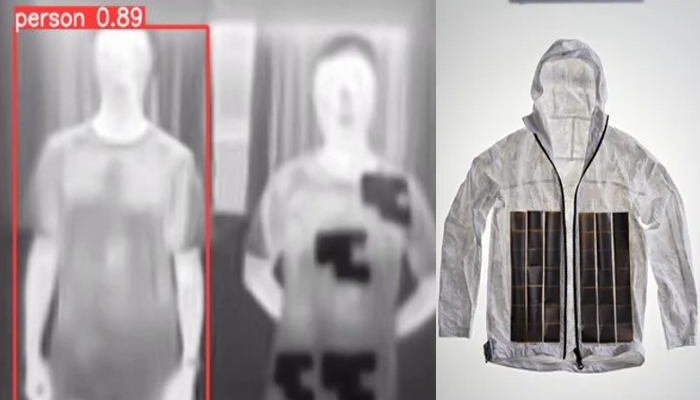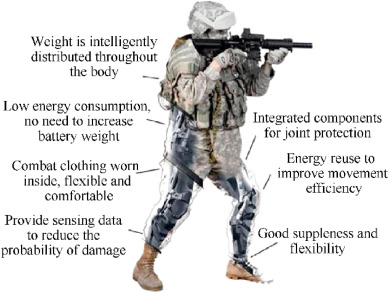
Chinese Military Invisibility Suit of 2024, In the realm of modern warfare, technology has always been a crucial determinant of success. The unveiling of the First Chinese Military Invisibility Suit in 2024 has sent shockwaves across the globe, particularly in the United States. This groundbreaking development marks a significant leap forward in stealth capabilities, reshaping the dynamics of military strategy and defense. Let’s delve into the intricacies of this remarkable innovation and its potential implications.
Read more: Unlocking the Universe: Your Ultimate Guide on How to Apply for NASA Settlement Contest 2024
Unprecedented Stealth Technology
The First Chinese Military Invisibility Suit represents a culmination of years of research and development in stealth technology. Leveraging advanced materials science, nanotechnology, and cutting-edge design principles, this suit has achieved unparalleled levels of invisibility on the battlefield. By manipulating light waves and utilizing adaptive camouflage systems, it renders the wearer virtually undetectable to both visual and infrared surveillance methods.
Strategic Advantage and Tactical Applications
The implications of such a technological leap are profound. In military operations, stealth plays a pivotal role in reconnaissance, infiltration, and surprise attacks. The Chinese Invisibility Suit grants operators a significant strategic advantage by enabling them to maneuver undetected in hostile environments. This capability can be leveraged across various domains, including ground operations, special forces missions, and covert reconnaissance.
Impacts on Defense Paradigms
The emergence of the First Chinese Military Invisibility Suit challenges existing defense paradigms, especially in countries like the United States, known for their technological prowess. The need to adapt to evolving stealth capabilities becomes paramount, prompting a reevaluation of defensive strategies, sensor technologies, and countermeasures. Nations worldwide are compelled to invest in research and development to maintain a competitive edge in an era of rapid technological advancements.
Global Response and Diplomatic Ramifications
The unveiling of such a disruptive technology inevitably triggers global responses and diplomatic considerations. Concerns over strategic balance, arms control agreements, and the potential for arms races in stealth technologies come to the forefront. Diplomatic dialogues, arms control negotiations, and intelligence assessments are intensified to assess the impact of the Chinese Invisibility Suit on global security dynamics.
Future Prospects and Innovation Trajectories
Looking ahead, the trajectory of stealth technology development is poised for further innovation and refinement. Research institutions, defense contractors, and military establishments worldwide are keenly observing and responding to these developments. The quest for enhanced invisibility, reduced electromagnetic signatures, and integrated sensor fusion continues to drive technological advancements in defense and security sectors globally.
Advancements in Military Technology
The unveiling of the First Chinese Military Invisibility Suit underscores the relentless pursuit of technological superiority in the realm of military affairs. This development is not an isolated event but part of a broader trend in which nations invest heavily in research and development to gain strategic advantages. Stealth technology, once considered a domain primarily dominated by a few technologically advanced nations, is now witnessing significant strides from emerging powers like China.
Technological Convergence and Innovation
The Chinese Invisibility Suit represents a convergence of multiple technological disciplines, showcasing the synergistic potential of diverse scientific domains. It integrates advancements in materials science, optics, nanotechnology, and digital signal processing to achieve its remarkable invisibility capabilities. Such interdisciplinary innovation highlights the complex nature of modern defense technologies, where breakthroughs often arise from collaborative efforts across scientific and engineering fields.
Operational Effectiveness and Battlefield Dynamics
From an operational standpoint, the integration of invisibility technology reshapes traditional battlefield dynamics. Stealth assets, whether in the form of aircraft, naval vessels, or individual soldier systems, gain enhanced survivability and mission effectiveness. The ability to operate undetected or with reduced detectability enhances situational awareness, facilitates strategic surprise, and enables precision strikes, thereby amplifying the operational effectiveness of military forces.
Challenges and Countermeasures
While the advent of Chinese Invisibility Suit presents significant advantages, it also poses challenges for defense planners and technologists globally. The quest for countermeasures to detect and neutralize stealth technologies becomes paramount. This includes advancements in sensor networks, electromagnetic spectrum analysis, artificial intelligence (AI) algorithms, and enhanced data fusion capabilities. The development of counter-stealth technologies represents an ongoing arms race within the defense industry.
Implications for Future Warfare
As nations navigate the complexities of stealth and counter-stealth technologies, the future of warfare takes on new dimensions. Concepts such as asymmetric warfare, where technologically advanced capabilities intersect with irregular tactics, gain prominence. Additionally, the ethical and legal considerations surrounding the use of invisibility technologies in armed conflicts become subjects of intense debate and international scrutiny.
Collaborative Research and Strategic Partnerships
In response to these developments, collaborative research initiatives and strategic partnerships emerge as crucial pillars of defense innovation. Cross-border collaborations among research institutions, academia, and private sector entities facilitate knowledge sharing, technology transfer, and joint R&D efforts. Such collaborations not only foster innovation but also contribute to building trust and transparency in global defense and security endeavors.
Conclusion: Navigating Technological Frontiers
The unveiling of the First Chinese Military Invisibility Suit signifies a pivotal moment in the evolution of stealth technologies and their impact on modern warfare. Beyond the immediate shockwaves it sends through defense circles, it prompts deeper reflections on the nature of technological competition, strategic foresight, and ethical considerations in military advancements. As stakeholders adapt to these rapid changes, the quest for technological supremacy continues to drive innovation and shape the future of global security landscapes.
The unveiling of the First Chinese Military Invisibility Suit in 2024 marks a watershed moment in modern warfare technology. Its implications transcend mere technological prowess, signaling a shift in strategic thinking, defense priorities, and global security dynamics. As nations adapt to these advancements, the landscape of warfare and defense strategies evolves, ushering in a new era of technological competition and innovation.
(FAQs) related to the First Chinese Military Invisibility Suit and its implications:
Q: What is the significance of the First Chinese Military Invisibility Suit unveiled in 2024?
A: The First Chinese Military Invisibility Suit represents a groundbreaking advancement in stealth technology, providing wearers with unprecedented levels of invisibility on the battlefield. Its unveiling marks a significant leap forward in military capabilities and has sparked global interest and concern.
Q: How does the Chinese Invisibility Suit achieve invisibility?
A: The suit leverages advanced materials science, nanotechnology, and adaptive camouflage systems to manipulate light waves and render the wearer virtually undetectable to visual and infrared surveillance methods. This technology enables stealth operations and enhances situational awareness for military personnel.
Q: What are the strategic advantages of invisibility technology in military operations?
A: Invisibility technology offers several strategic advantages, including enhanced reconnaissance capabilities, the ability to infiltrate enemy territory undetected, and the element of surprise in tactical engagements. It also improves survivability by reducing the risk of detection and targeting by hostile forces.
Q: How do other nations, especially the United States, respond to the emergence of the Chinese Invisibility Suit?
A: The unveiling of the Chinese Invisibility Suit has prompted nations, particularly technologically advanced ones like the United States, to reassess their defense strategies and invest in research and development to counter evolving stealth technologies. This includes the development of counter-stealth measures and the enhancement of sensor technologies to detect and neutralize stealth capabilities.
Q: Are there concerns about the ethical and legal implications of invisibility technologies in warfare?
A: Yes, the use of invisibility technologies in armed conflicts raises ethical and legal questions regarding transparency, proportionality, and adherence to international laws of war. There are ongoing debates and discussions within the international community on the responsible use of advanced military technologies and the need for ethical guidelines and regulatory frameworks.
Q: How do collaborative research initiatives and partnerships contribute to defense innovation in the context of stealth technologies?
A: Collaborative research initiatives and partnerships among nations, research institutions, academia, and private sector entities play a crucial role in advancing defense innovation. These collaborations facilitate knowledge sharing, technology transfer, joint R&D efforts, and the development of common standards and protocols in defense and security domains.
These FAQs provide insights into the technological, strategic, and ethical dimensions surrounding the First Chinese Military Invisibility Suit and its implications for global security.




